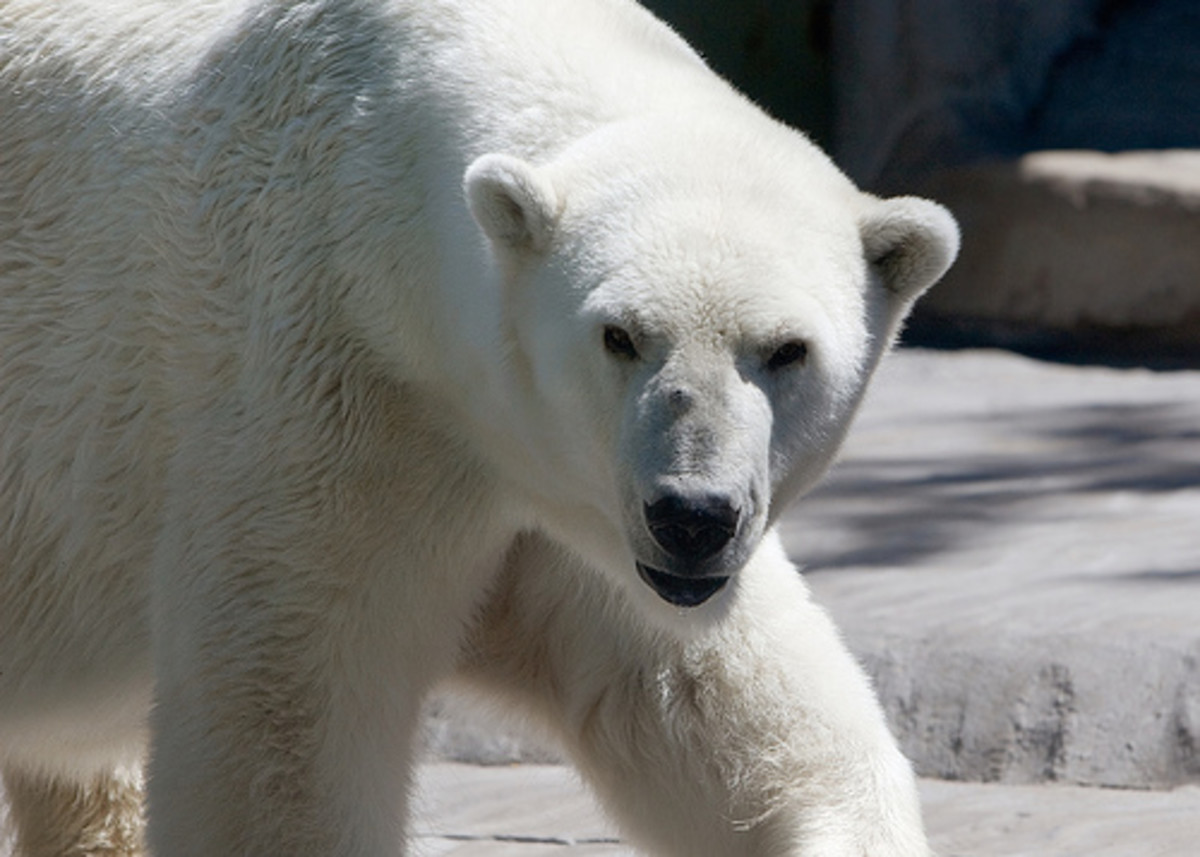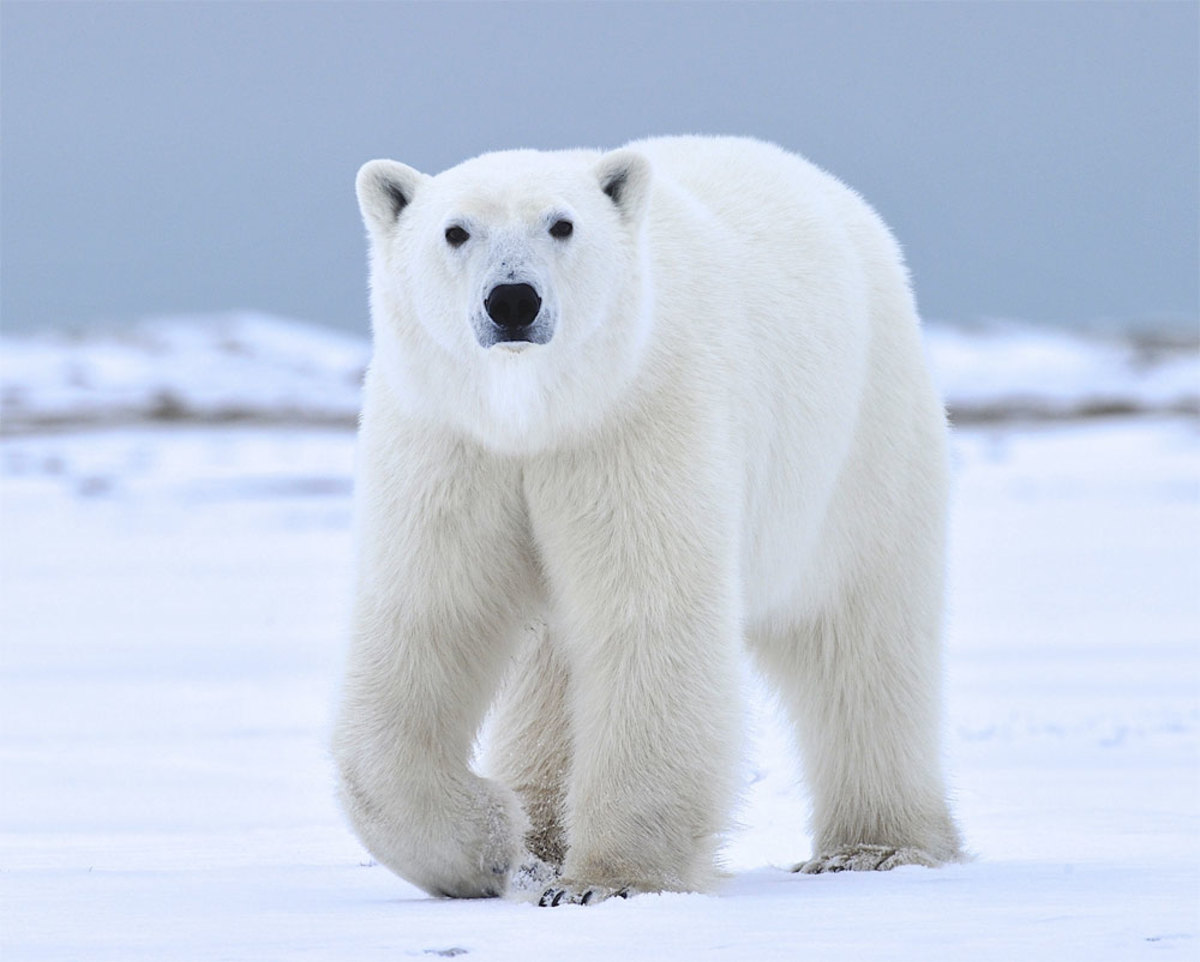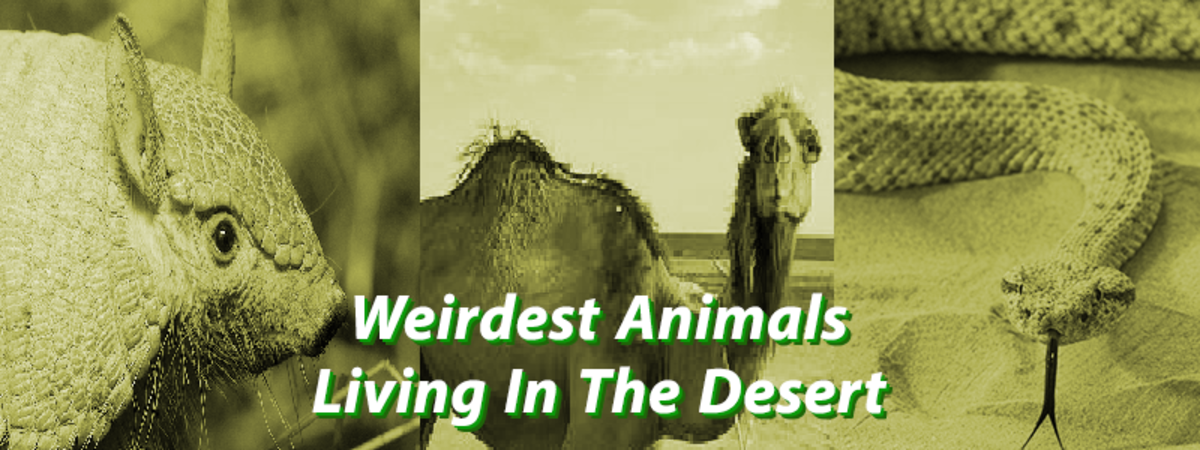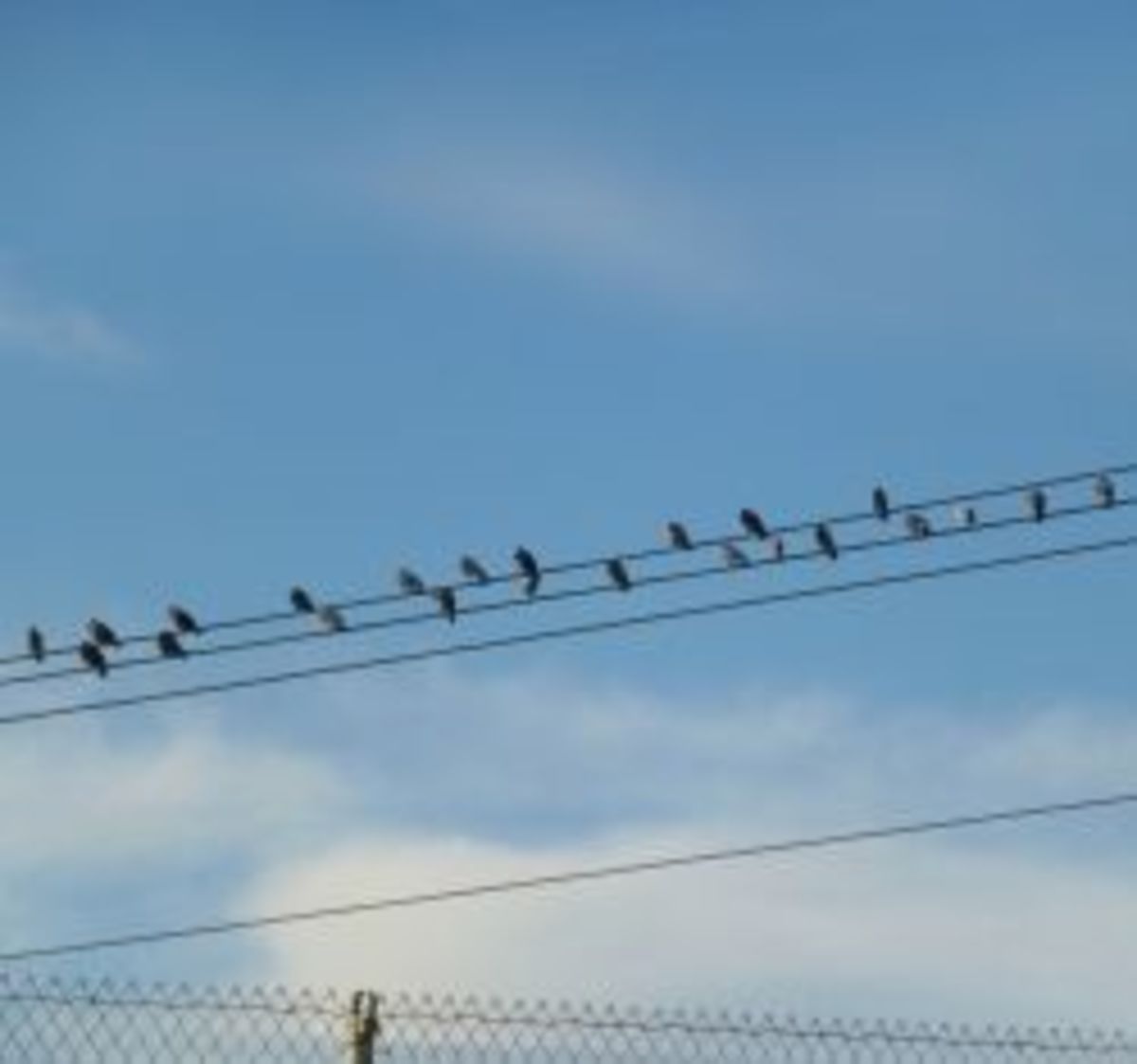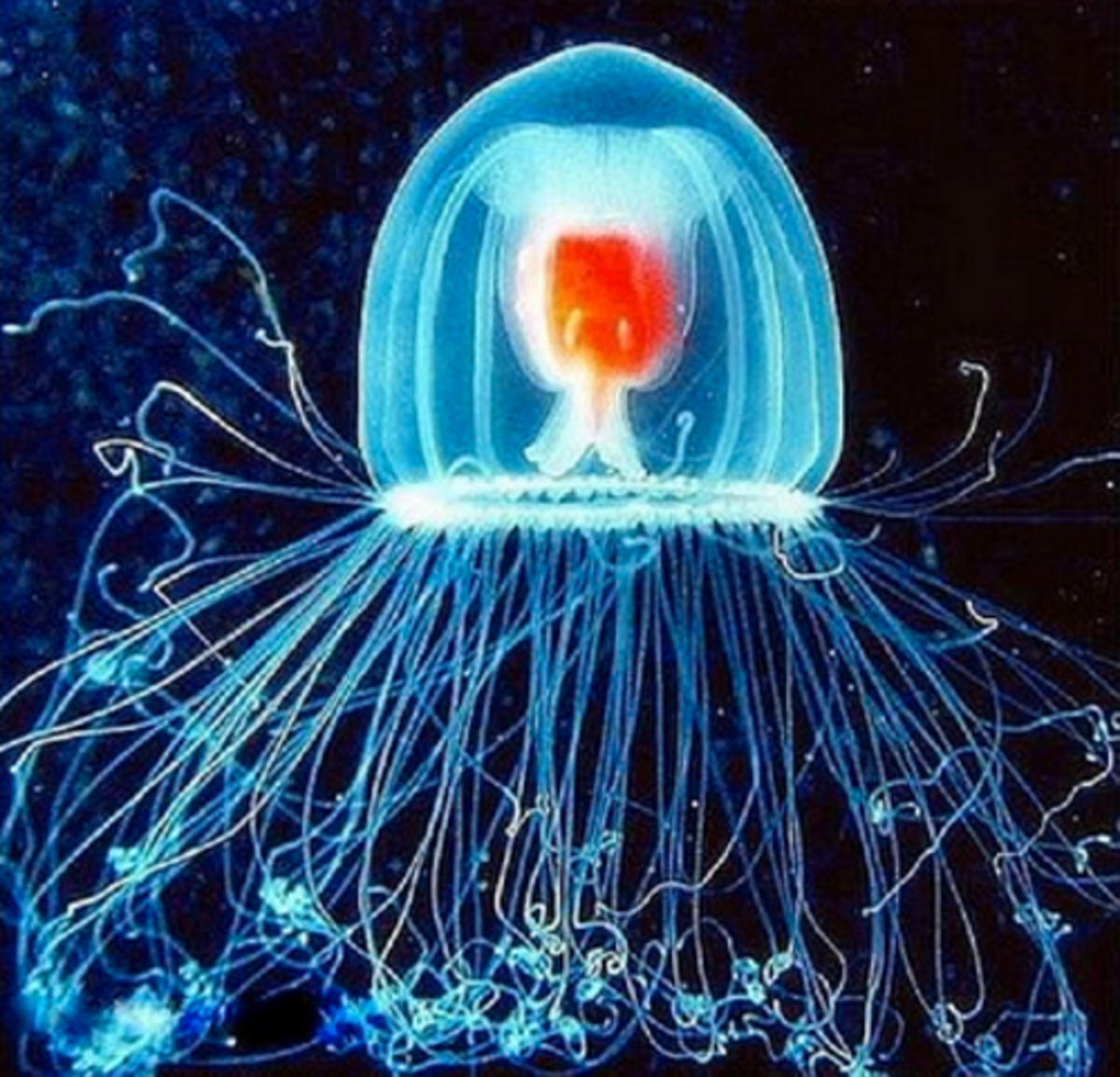Bears: What You Need to Know
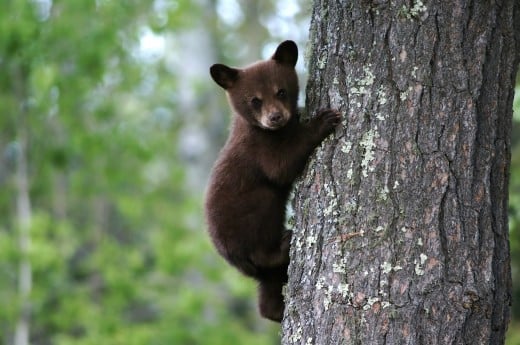
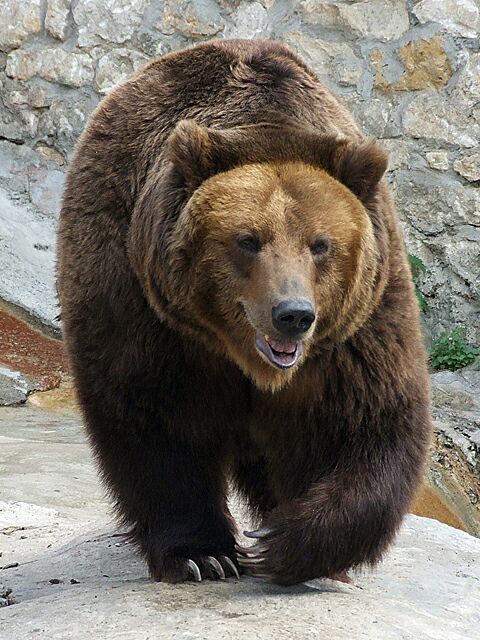
Close encounter with a grizzly in Alaska: the kind yout don't want
There are many kinds of bears around the world: Here are just a few.
Bears have been around for 38 million years in many forms over the eons. It is thought that bears and wolves evolved from a common genus or ancestor. Over that span of time, they have evolved to the several sub species or types within the species of the present form. All bears have traits in common, being that they are omnivorous for the most part with the exception of the polar bear that lives almost exclusively on meat. Most other bears will eat what they can find, whether berries, roots, insects, fish, meat and by scavenging. The bears we are familiar with all hibernate after a sometimes brief and intense eating and mating season. The types of bears that we are most likely to encounter are the black bear, the brown bear, the grizzly, the Kodiak bear and the polar bear. The so called spirit bear is actually an albino black or brown bear. Polar bears are increasingly mating with black, brown, Kodiak or grizzly bears as their own ecosystem is shrinking and unstable. The territory of the black, brown and grizzly bear is expanding into former polar bear territory and cross mating has been happening, giving rise to a new forms of bears seldom seen.
For the most part, unless a bear is really hungry, it prefers to avoid people and will flee provided we give plenty of warning. The “personal space” of bears can extend up to 100 meters. The exception to this avoidance is the grizzly, especially the female with cubs. Grizzly bears generally do not fear people and if per chance a hiker or hunter gets between a female and her cubs, the female will attack the person and kill them. After that, she may devour the corpse. This can also be true of a black bear mother and her cubs, especially when the bear encroaches upon towns and cities. Many backwoods workers like forest fire fighters, forest rangers, tree planters and others often have to be armed with a large calibre high muzzle velocity rifle in case of an encounter with a grizzly bear. Aside from a mother raising cubs, bears are solitary hunters much like the mountain lion. Though they will often congregate during the upstream salmon run, there is very little cooperation between individual bears unlike that of wolves that work in packs. All bears are becoming increasingly aggressive due to a shrinking environment, decreasing wild food and strange weather that is interfering with their food supply. Bear attacks are on the increase, even in the context of a city environment.
Bears typically have massive barrel shaped bodies on short thick,muscular legs with large claw bearing paws. The tail is short and truncated appearing. The shoulders are prominent with the grizzly boasting a powerful shoulder hump. The heads tend to be wide and as they are hunters for fish like salmon, they have forward looking eyes for binocular vision. Some bears are so skilled at catching fish that the salmon during their upstream run appear to leap right into the bears mouth. Bear ears are large and triangular like a cats for picking up on distant and subdued sounds. Bears can stand on their hind legs for considerable times, usually to survey a location for possible food or a mate. This is also a preferred stance if they are on the attack and a single swipe of their muscular forearm and massive paw is enough to kill a deer, moose or a man. They usually travel on all fours, unless two males are sparing for access to a female in heat. Let us look at the various bears.
Black bears
The black bear range is huge, covering almost all all of Canada and in remaining patches in much of the US from coast to coast. In the US they concentrate in the mountains. The black bear can be distinguished by its black coat and the light appearing muzzle. In profile, their faces are more concave than those of the larger brown bear. Their ears tend to be small and rounded. The black bear tends to be small as far as bears are concerned with an average weight of 1 to 1.5 times that of a human being. They are highly dexterous, capable of opening screw top jars and door latches. They are very strong, capable of overturning objects weighing up to about 150 kilograms with a single forearm in the hunt for food. You cannot outrun a black bear as they can top 50 kilometers per hour on a sure footed run. They have good color defined eyesight and can learn as fast as a dog. Black bears tend to be among the most numerous of all the sub-species.
Brown bear
The territory of the brown bear is limited to the northwest of the US, Canada, Alaska and is common throughout northern Europe and Russia. Its appearance in the northern hemisphere gives it the most extensive territory in the world. They have also been seen as far south as the Himalayan mountains. The brown bear has a prominent shoulder hump. Brown bear claws tend to be longer and less curved than that of the black bear with the fore-claws being significantly longer than the hind claws. Brown bears range in weight from about 150 kilograms up to 350 kilograms. Some biologists consider the Grizzly and Kodiak bears to be an extreme form of the brown bear. It is the brown bear that is seen in streams most often during the salmon run as these bears live in the west coast where Pacific salmon run to spawn in the late summer and early fall. Sometimes you can see bears standing at the top of cataracts and falls to wait for jumping salmon. They catch the fish as they attempt to jump to the next level of the spawning stream. The appetite of the brown bear is voracious as they can devour up to 40 kilograms of food a day. They do this as the hibernation period will take them out of the eating cycle for several months in the north and mountains. They will dig a den in a suitable hillside in preparation for the long sleep. Females will give birth during the winter rest and nurse up to two cubs. These will be cared for for two years. During the third year, they will mate again. Despite their large size, they can run fast, up to 48 kilometers per hour. In remote areas, the brown bear does not fear people and they tend to be large.
Grizzly bear
This bear is considered by some to be a sub-species of brown bear. It differs insofar as the fur is “silver tipped” and it is very large, ranging in weight from 150 kilograms and topping to 450 kilograms. The range of the grizzly used to be the western half of all of north America, but today, the range concentrates in British Columbia, western Alberta, the North West Territories and Alaska, particularly in the dense forest and mountainous regions. Newborn cubs weigh in at only 500 grams and there may be as many as four in a birth, but usually there are two. Like the brown bear, they have a pronounced hump on their shoulders, which the black bear lacks. Grizzlies have one of the lowest reproductive rates of mammals, due in part to the fact that they do not reach reproductive capacity until at least five years of age. In addition, when the female has cubs, she will raise them for two years. In addition, the typical range of the grizzly is 4,000 square kilometers, which is a large territory. They are solitary and though there is some interpenetration of territory, they seldom cross, unless it's mating season. These vast territories also cause population fragmentation, which leads to local inbreeding and the problems that arise therefrom. Grizzlies will also congregate where food is abundant, such as during salmon runs. Though they are structured like carnivores, they will eat plants,, which make up to 90 percent of their diet. Due to their size, being the largest hunters in the western hemisphere, they can take down moose, elk, bison, deer and anything else that is available. The Canadian and Alaskan grizzly tend to be larger due to the availability of fat and protein rich fish like salmon.
During feeding season, they can gain as much as 180 kilograms in weight as the gorge. Grizzlies go through a period of false hibernation which they do in a high mountainous in a den they dig on the north side at high altitude to avoid predators like wolves and big cats or even other bears. However, if the bear lives near the temperate coast where food can be had year round and snow pack is rare, it will not hibernate. Grizzlies and wolves are known to compete over a carcase that wolves have brought down. The grizzlies keen sense of smell will often locate a fresh wolf kill while the wolves are still gorging. A fight will ensue between a grizzly and several wolves. At first, the wolves will attempt to distract the grizzly, but as the grizzly approaches, they will attack in a pack, attacking at the rear of the bear. The bear will the sit and use its massive front paws in attack in a swinging motion front and back. This tactic will often cause the wolves to leave due to kills from the massive claws. In the end, the grizzly will get the carcase and any dead wolves to eat. Because they are so large, when they stand, they can tower over almost anything else including people. Grizzlies typically do not fear man and will attack when provoked or hungry. The “personal space” of a grizzly is about 100 meters. Despite their size, they can outrun a man and out swim him too. Fleeing from a grizzly when it attacks is not an option. If you are in their territory, you should have a weapon capable of killing on first shot. That is the only option a man will have in that circumstance. You should also be wary of their presence. In thick wooded areas, one might inadvertently “stumble upon” a feeding grizzly and alarm the bear, which is not good. Besides, the bear may well see you as fresh meat ready to eat and go on the offensive. Grizzly – cougar competition is different. Usually a cougar will give up its kill if a grizzly ambles in and just steals it, but the cougar will harass the bear at a safe distance in the hope to get it to give up and move on. Sometimes that will work, especially if the bear gets its fill.
Kodiak bear
This bear has an extremely limited range and is under threat of extinction as a result. It is sometimes known as the Alaskan brown bear of the Alaskan grizzly. It's range is limited to the tip of Alaska that is closest to the Russian mainland across the Bering Strait and among the islands in that region known as the Kodiak Islands. At last count, there were about 3,500 individuals. The fur ranges from blond color to orange. To dark brown The young have a white neck ring that disappears with age. They are suited for a long cold seasons. Sizes for this bear can range up to 530 kilograms, which makes it larger than a true grizzly. The size of this bear is truly impressive. They stand at 5 feet at the shoulder when on all fours, but when standing like a man, they tower at ten feet. Kodiak bear – human contact is rare due to their location and rarity. The largest Kodiak bear ever recorded was a massive 850 kilograms. They are most active from April to October and hibernate over the winter. They eat salmon and will gorge on beached whales. Females will give birth to one to three cubs once every four years after they reach five years of age.
Polar bear
Polar bears live in glacial and ice bound regions of the high arctic and the surrounding coastal lands such as Greenland, northern Canada, Alaska and northern Russia. It is thought that they evolved from Brown bears and diverged some 100,000 to 130,000 years ago. In Canada, they will go as far south as the tip of the Georgian Bay when it is covered by ice. Their diet is almost exclusively meat and they prefer seals. They will hunt fish and scavenge dead whales when seals are not to be found. They are considered the world's largest carnivore and rival the size of the Kodiak bear. Contrary to other bears, these ones will hibernate during the short Arctic summers. Among bears, polar bears are by far the best swimmers, capable of endurance swimming over several days. There is one recorded instance of a polar bear swimming for nine days non stop between ice floes and land. Polar bear paws tend to be very large to allow them to walk in packed snow without sinking and for swimming. Typically, they prefer broken sea ice where they can stage attacks on seals most effectively. Their head and body form tends to be longer and sleeker than other bears, which is probably the result of their adaptation to swimming.
Bears will bolt when surprised. Black bears will retreat from people when surprised as will brown bears. With grizzly bears, they will attack if they think their food or cubs are threatened. Kodiak bears tend to be shy of people due to very infrequent contact. Bears do communicate and have several vocalizations ranging from a moan, to growls and roars. These are typically are used to communicate with other bears, but under threat, they will roar to intimidate their perceived enemy.
All plant eating bears have a mutualistic symbiosis with plants they eat by distributing the seeds far and wide. The plant produces the fruit or nuts that is nutritious for the the bear, which it likes and eats. The fruit seeds and some nuts actually have to pass through the bear in order to germinate more easily. They are passed out with the feces that acts as a fertilizer for sprouting seedlings. Bears that eat plants will dig up soil for roots and in the process aerate the soil and bring up deep seated nitrogen. Regions worked by bears tent to be more bio-diverse as a result as opposed to regions where there are no bears that deep mix the soil.
One of the more interesting aspects of bears is their tendency to hibernate over the winter months for all bears except the polar bear that hibernates in the short summer season. While awake, bears will gorge themselves on all they can find to eat. When winter sets in, they seek out a refuge by way of a cave or some natural shelter where they slumber for months on end. This is of interest to people who consider hibernating for extended space voyages to planets and the stars. This has been depicted in the Alien series of movies. The bear is able to slow its metabolism to a stage of just barely living. During this period of unconsciousness, the pregnant female will give birth to one or two cubs that will feed on breast milk while the mother sleeps. So cross country skiers will not have to worry about unexpected encounters with bears. This leaves the other back woods and mountain predators the wolves and mountain lions for northern climates. They do not hibernate and are almost exclusively carnivore and in the winter, very hungry. Wolves tend to shy away from people, but not the lion, which like to stalk, take down and kill.
Then there are animals that are called bears that are not bears at all, such as the Chinese panda bear and the Australian Koala bear. The Chinese panda is actually a member of the raccoon species and the koala is a marsupial that lives in trees. Both are exclusively vegetarian, preferring the leaves of a single species of grass or tree.
With climate change comes hybrid bears born between sub-species
Here is a BBC News article on grizzly-polar bear hybrids
- BBC - Earth News - Polar bear plus grizzly equals?
A new study reveals what happens when a polar bear is crossed with a grizzly. - Bears In Our Backyard!

